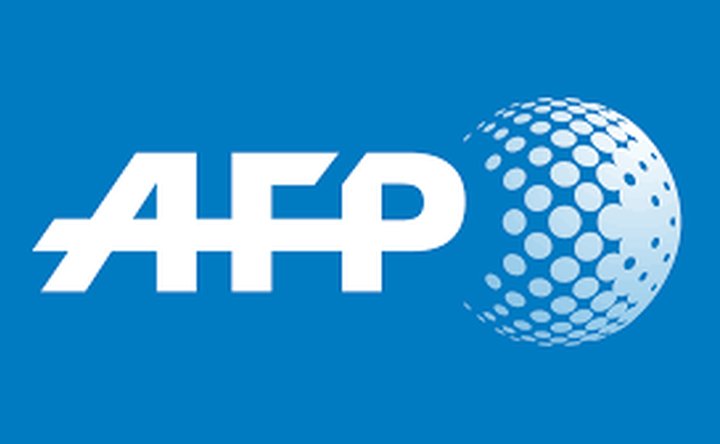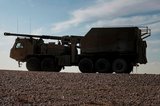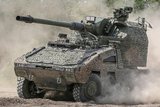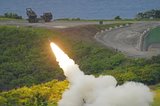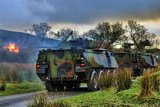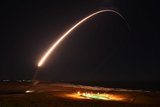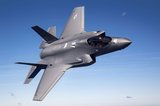US sanctions Chinese military unit for buying Russian jets, missiles
The US expanded its sanctions war against Russia to China on 20 September, announcing punitive measures against a Chinese military organisation for buying Russian fighter jets and missiles.
Stepping up pressure on Moscow over its ‘malign activities’, the US State Department said it was placing financial sanctions on the Equipment Development Department of the Chinese Ministry of Defence, and its top administrator, for its recent purchase of Russian Sukhoi Su-35 fighter jets and S-400 surface-to-air missiles.
Officials said it was the first time a third country has been punished under the Countering America's Adversaries Through Sanctions Act (CAATSA) sanctions legislation for dealing with Russia, and signalled the Trump administration's will to risk relations with other countries in its campaign against Moscow.
They also said that the US could consider similar action against other countries taking delivery of Russian fighter jets and missiles. US ally Turkey is currently talking with Moscow about an S400 deal.
A senior administration official told journalists, insisting on anonymity: ‘The ultimate target of these sanctions is Russia. CAATSA sanctions in this context are not intended to undermine the defence capabilities of any particular country. They are aimed at imposing costs on Russia in response to its malign activities.’
CAATSA was passed in 2017 as a tool that gives the Trump administration more ways to target Russia, Iran and North Korea with economic and political sanctions.
With regard to Russia, CAATSA arises from the country's ‘aggression in Ukraine, annexation of Crimea, cyber intrusions and attacks, interference in the 2016 elections, and other malign activities,’ the State Department said.
The legislation allows the government to take action against those companies and individuals who have been placed on the CAATSA blacklist.
EDD and its director Li Shangfu became targets after taking delivery over the past year of the jets and missiles from Rosoboronexport, Russia's main arms export entity already on the CAATSA blacklist for its support of the Assad regime in Syria.
At the same time, the State Department also announced it was placing 33 Russian intelligence and military-linked actors on its sanctions blacklist under the CAATSA rules.
All of them – defence related firms, officers of the GRU military intelligence agency, and people associated with the St. Petersburg-based Internet Research Agency disinformation group – have been on previous US sanctions lists and 28 of them have already been indicted by Russia election meddling investigator Robert Mueller.
The State Department said: ‘We will continue to vigorously implement CAATSA and urge all countries to curtail relationships with Russia's defence and intelligence sectors, both of which are linked to malign activities worldwide.’
The sanctions freeze any of EDD's and Li's assets in US jurisdictions.
They also restrict EDD's access to global financial markets by blocking foreign exchange transactions under US jurisdiction or any transactions in the US financial system.
The senior official stressed that CAATSA is not going to be implemented across the board, but that the US was choosing Russia's sale of ‘bigger ticket items’ of ‘new, fancy, qualitatively significant stuff’ that could have a ‘security impact’ on the US.
The official said: ‘The CAATSA was not intended to take down the economy of third party countries. It's intended to impose appropriate pressures on Russia in response to Russian malign acts.’
The official declined to answer if the US would take similar action if Russia delivers S400 missiles to other countries such as Turkey, which is in talks to buy them.
However, he said: ‘You can be confident that we have spent an enormous amount of time talking about prospective purchases of things such as S-400s and Sukhois with people all around the world who may have been interested in such things and some who may still be. We have made it very clear to them that these – that systems like the S-400 are a system of key concern with potential CAATSA implications.’
More from Defence Notes
-
![How might European countries look to tackle drone incursions?]()
How might European countries look to tackle drone incursions?
Disruption of infrastructure in Europe, whether by cyberattack, physical damage to pipelines or uncrewed aerial vehicles flying over major airports, as has happened more recently, is on the rise. What is the most effective way of countering the aerial aspect of this not-so-open warfare?
-
![Taiwan approved for $11 billion weapon purchase from US]()
Taiwan approved for $11 billion weapon purchase from US
The US State Department’s approval of a multi-billion-dollar sale of weapons to Taiwan includes tactical mission networks equipment, uncrewed aerial systems, artillery rocket systems and self-propelled howitzers as well as anti-tank guided missiles.
-
![Ireland spells out $2.3 billion shopping list in five-year defence spending plan]()
Ireland spells out $2.3 billion shopping list in five-year defence spending plan
Ireland’s multi-annual investment in capital defence spending is set to rise from €300m in 2026 to €360m in 2029–2030 with major upgrades across land, air, maritime and cyber domains.
-
![Canada to deepen integration of multi-domain capabilities to strengthen its defences]()
Canada to deepen integration of multi-domain capabilities to strengthen its defences
The Canadian Department of National Defence has created new organisations to manage the procurement and integration of all-domain solutions and allocated US$258.33 million to strengthen production capacities.
-
![US National Security Strategy prioritises advanced military capabilities and national industry]()
US National Security Strategy prioritises advanced military capabilities and national industry
The 2025 NSS has emphasised investment in the US nuclear and air defence inventory and national industry, but it leaves multiple unanswered questions on how the White House will implement this approach.
-
![Canada set to look away from its neighbour and across the Atlantic for partners]()
Canada set to look away from its neighbour and across the Atlantic for partners
While non-EU UK struggles to join the Security Action for Europe initiative, which provides loans for defence programmes, Canada has become the first country outside Europe to get access – and did so for a nominal fee.








